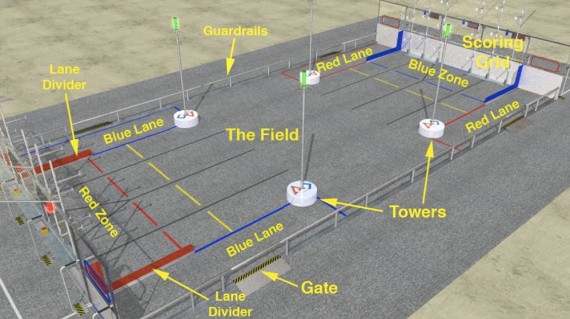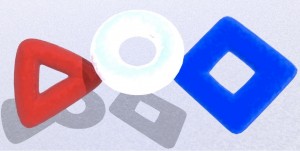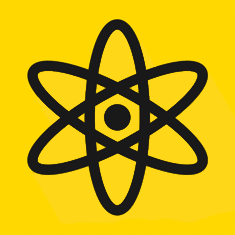2011 FIRST Game: LogoMotion
 LogoMotion is played by two competing alliances on a flat 27 by 54 foot field. Each alliance consists of three robots each. They compete to hang as many inflated plastic triangles, circles, and squares on their grids as they can during a 2 minute and 15 second match. The higher the teams hang their game pieces on their scoring grid, the more points their alliance receives.
LogoMotion is played by two competing alliances on a flat 27 by 54 foot field. Each alliance consists of three robots each. They compete to hang as many inflated plastic triangles, circles, and squares on their grids as they can during a 2 minute and 15 second match. The higher the teams hang their game pieces on their scoring grid, the more points their alliance receives.
The Field
 LogoMotion is played on a 27-foot by 54-foot carpeted area, surrounded by a guardrail system and alliance walls. Tape covers the field, denoting lanes, zones, caution lines and tracking lines. Scoring grids are located on each ends of the field directly in front of the alliance stations. Four towers are located towards the middle of the field that are used for end of game play.
LogoMotion is played on a 27-foot by 54-foot carpeted area, surrounded by a guardrail system and alliance walls. Tape covers the field, denoting lanes, zones, caution lines and tracking lines. Scoring grids are located on each ends of the field directly in front of the alliance stations. Four towers are located towards the middle of the field that are used for end of game play.
Game Pieces
 There are four types of inflated plastic game pieces: a red triangle, white circle, ubertube (yellow circle), and a blue square. These game pieces vary slightly in size and dimensions as well. Together, the red triangle, white circle, and blue square are supposed to create the FIRST logo.
There are four types of inflated plastic game pieces: a red triangle, white circle, ubertube (yellow circle), and a blue square. These game pieces vary slightly in size and dimensions as well. Together, the red triangle, white circle, and blue square are supposed to create the FIRST logo.
Autonomous Period
Teams will be able to pre-program their robot to perform certain functions and maneuvers without control of the drivers. Students may program a robot to place an Ubertube onto scoring grids or to do anything within the parameters of the game rules. This is the only time a team may hang an Ubertube. Tubes placed on the bottom row score 2 points, tubes on the middle row score 4 points, and tubes on the top row score 6 points. Teams may not interact with any of the game pieces or the field during this period. Autonomous period starts at the beginning of the match and lasts a total of 15 seconds.
Teleoperated Period
After the autonomous period, drivers will assume control of the robots in the teleoperated period. Robots must hang game pieces onto the scoring grids located on the opposite sides of the field to get points. Logo pieces placed on the bottom row of the scoring grid will score 1 point, while pieces in the middle row will net 2 points, and 3 points will be awarded for the top row. Human players may also throw game pieces either through the feeding slot or over the wall. The teleoperated period lasts 2 minutes and the last 10 seconds of this period will be dedicated to Minibots. Minibots will be deployed from a Hostbot and will have an opportunity to race to the top of towers located on the field. Points will awarded to teams based upon their times to the top of tower.
Scoring
Each alliance will have a match score, totaling up all of the points garnered from the autonomous score, peg score, logo bonus, race score, and any infractions or penalties. If two game pieces are hung onto one peg, only the outermost game piece will be counted. If during the teleoperated period a team hangs a game piece over an Ubertube, that game piece will score double points. An Ubertube in this case would act as a modifier. If three game pieces forms a row in a form of a logo, a logo bonus will be added to the team’s score. A race score will also be added to the match score. The first Minibot to reach the top will get 30 points, followed by second with 20 points, third with 15 points, and fourth with 10 points. The total match score will be totaled up at the very end of the match.
Our Solution: Seraphina
Below is a picture of our robot on February 22nd, 2011 (bag & tag day).
-
Drivetrain
- Six wheels driven by two CIM motors through Andy Mark Tough Boxes
-
Arm
- Aluminum truss construction with CIM motor chain drive and constant force spring counter balance
-
Grabber
- Two polycarbonate pieces with a pneumatic cylinder actuator to grip game pieces.
-
Sensors
- Drivetrain encoders in each of the Andy Mark Tough Boxes
- Arm position sensor potentiometer with limit switches at the minimum and maximum travel positions
- Wrist position sensor potentiometer with limit switches at the minimum and maximum travel positions
-
Minibot and Deployment Mechanism
- Pneumatic actuated mini-bot deployment system with automatic pole alignment
- Minibot with dual Tetrix drive motors, zero friction neodymium magnetic pole grip and automatic reverse
-
Specifications
- Weight: 119.5lb
- Dimensions: 28 x 38 x 60



